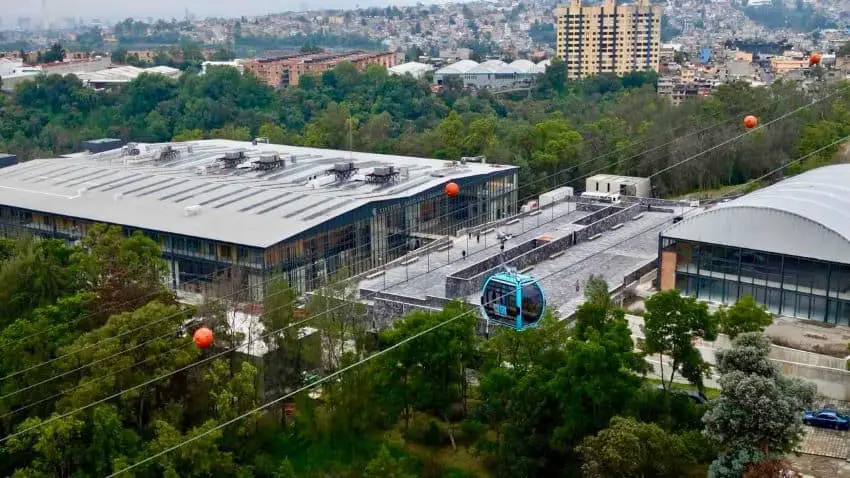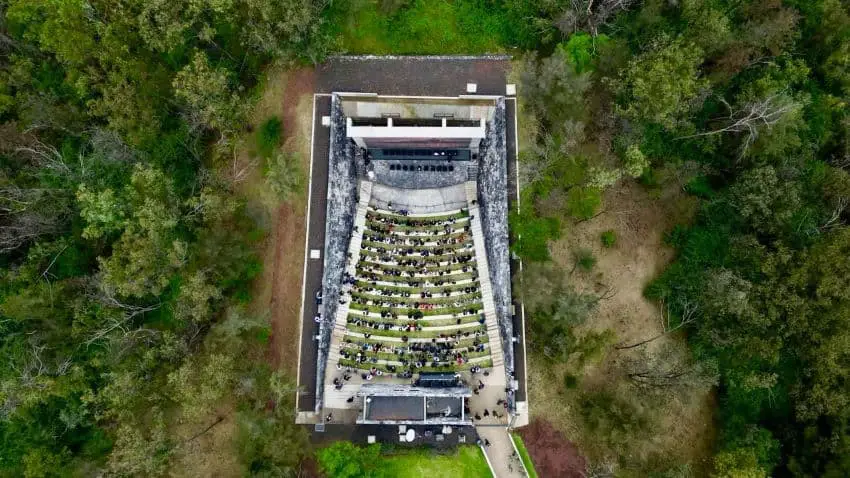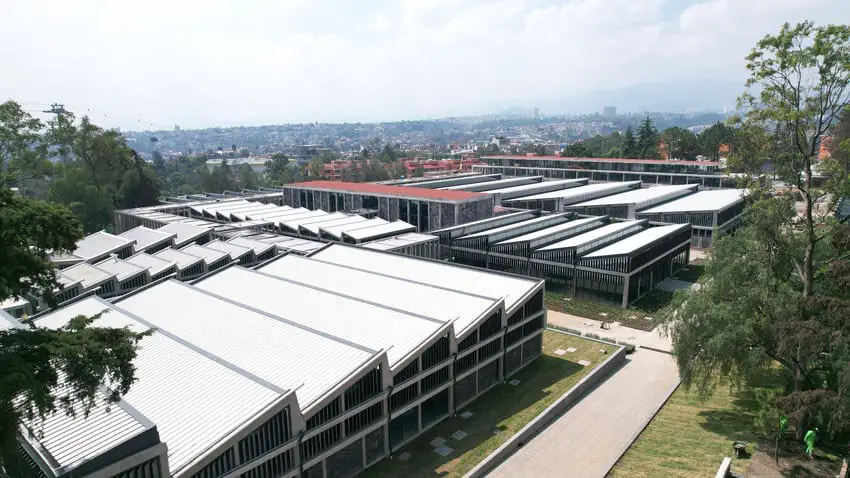Mexico has inaugurated a dazzling new national film center, the Cineteca Nacional Chapultepec. After years of intense planning and hard work, this innovative complex in the fourth section of Chapultepec Park finally opened its doors on Sept. 24, 2024. Then-president Andrés Manuel López Obrador and president-elect Claudia Sheinbaum presided over the inauguration, declaring that “Chapultepec belongs to all Mexicans.”
The Cineteca Nacional Chapultepec is a sanctuary dedicated to independent and arthouse cinema. In a city dominated by commercial giants like Cinépolis and Cinemex, this venue offers a refreshing alternative, showcasing films that often go unnoticed on mainstream screens.

A niche for true cinephiles
The Cineteca Nacional Chapultepec takes its cue from a tough act to follow: the iconic Cineteca Nacional in Coyoacán. This original venue became a cultural powerhouse after its 2012 remodel, which boosted its popularity to over a million visitors each year.
Known for its dedication to independent and artistic films, as well as its workshops, exhibitions, and other activities celebrating the art of filmmaking, the original Cineteca set a high standard. This successful approach now serves as the blueprint for the Chapultepec location, extending the same vibrant programming and creative spirit to a broader audience.
A cinema like no other
The Cineteca Nacional Chapultepec, sprawling across nearly 12 hectares, is a grand cultural complex designed to impress. With eight screening rooms ranging from cozy 125-seat theaters to expansive halls accommodating 357 viewers, this venue can seat up to 1,800 people per day. What sets it apart is its cutting-edge technology: every room features 4K laser projectors for stunningly sharp visuals and Dolby Atmos surround sound systems that captivate the senses. Few venues in Mexico offer such high quality.
The Foro al Aire Libre (Outdoor Forum) offers a fresh twist on the movie-going experience. Designed like an auditorium, it features 16 tiers of seating with a capacity for up to 357 people. The space is equipped with state-of-the-art 7.1-channel sound and a massive projection screen measuring 39 feet wide by 23 feet tall. Its automated dimmable lighting system allows for clear projections even during daylight hours.

Of course, no trip to the movies is complete without snacks, and the new Cineteca delivers here as well. Visitors can satisfy their sweet tooth at the candy stores, enjoy a warm coffee at the café, browse an impressive selection of books at the bookstore or sit down for a full meal at the on-site restaurant.
A safe haven for Mexico’s treasures
This site also hosts the new Bodega Nacional de Arte (National Art Repository). This impressive facility, consisting of 13 buildings, will host artistic workshops and serve as a secure home for the invaluable collections of the National Institute of Fine Arts and Literature (INBAL), Mexico’s leading institution for the promotion and preservation of fine arts and literature.
The Bodega focuses on preserving and restoring artistic and cultural treasures, safeguarding some of the nation’s most significant works for generations to come.
Part of a bigger plan
This arts complex was developed as part of the federal government’s Bosque de Chapultepec: Naturaleza y Cultura project, which is giving the entire park a serious glow-up. This ambitious initiative, which drew criticism from some sectors for drawing on a significant part of the reduced national culture budget, is transforming one of the world’s largest urban parks.

The project revolves around three pillars: Social, environmental and cultural. The social focus is on making the park more welcoming and better connected to the surrounding city; one of its central elements was connecting the previously isolated sections of Chapultepec itself through initiatives like the construction of Line 3 on the Cablebús and the pedestrian that now links Sections I and II of the park across the Anillo Periférico highway. The environmental angle revitalizes its landscapes, reintroduces native species and ensures sustainable water management. Meanwhile, the cultural component, which includes the new Cineteca, was intended to turn Chapultepec into a hotspot for creative expression.
From military area to cultural oasis
The space that the Cineteca Chapultepec occupies was once part of Campo Militar 1-F, a restricted military installation where weapons and ammunition were assembled. The new project seeks to reclaim government-controlled spaces and turn them into public treasures for all to enjoy.
Much like the repurposing of Los Pinos, the former presidential residence that then-President López Obrador transformed into a public cultural complex early in his administration, this project aligns with the promise to provide Mexicans with access to spaces once reserved for the elite. “This project will primarily allow the working-class neighborhoods that face Chapultepec to have the park within reach because that’s not how it was before,” the former president said at the complex’s inauguration in September.
Learn filmmaking for free at the CCC, thanks to Netflix
The new Cinema Training Center (CCC) is an integral part of the new Cineteca Nacional Chapultepec. This state-of-the-art film education center is designed to accommodate up to 280 students, offering cutting-edge facilities and programs to nurture emerging talent in the cinematic arts. In addition to positioning itself as a leading film school, it is also making waves by announcing an exciting partnership with none other than Netflix.
The Netflix Fund for Creative Equity in Mexico, launched this past August, is investing 22 million pesos to open doors for underrepresented communities in the entertainment industry. This program aims to discover and nurture the next wave of diverse talent while charging no tuition fees. For aspiring filmmakers, this means that a world-class education in cinematography is now within reach.
Accessible to all
Ticket prices to film screenings have been set at an affordable 70 pesos for general admission and just 50 for students, seniors and anyone under 25. Getting to the Cineteca is also a breeze. Public transportation options include the Cineteca Chapultepec station on the Cablebús’s newly-opened Line 3 and the still-incomplete Vasco de Quiroga station on the Mexico City-Toluca commuter train.
The Cineteca Nacional Chapultepec offers an unparalleled blend of cinema, culture and nature, making it a must-visit destination in Mexico City. Whether you’re a film enthusiast, an art lover or simply looking for a unique outing, this cultural gem promises an experience like no other.
Sandra Gancz Kahan is a Mexican writer and translator based in San Miguel de Allende who specializes in mental health and humanitarian aid. She believes in the power of language to foster compassion and understanding across cultures. She can be reached at: sandragancz@gmail.com
